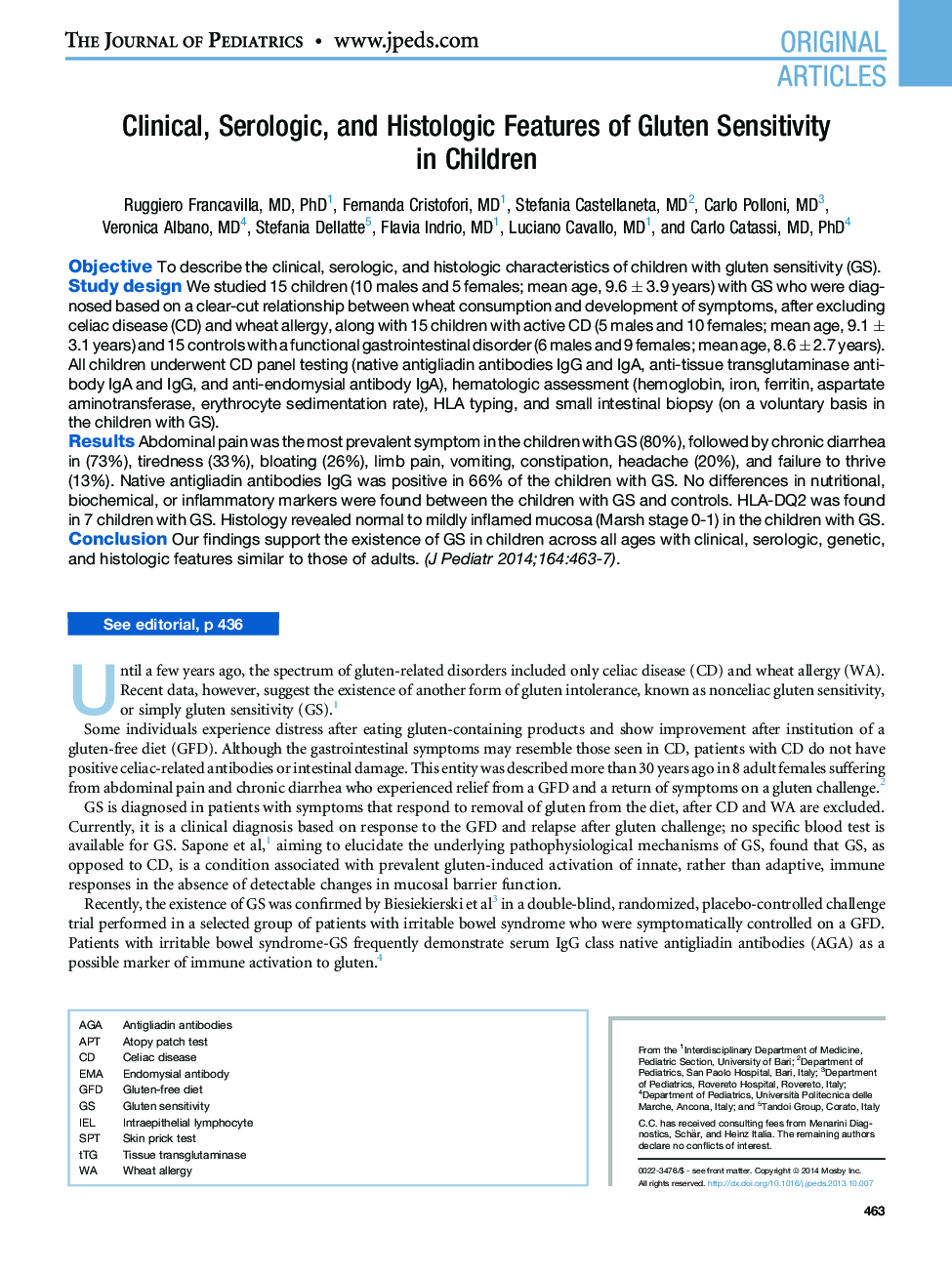| Article ID | Journal | Published Year | Pages | File Type |
|---|---|---|---|---|
| 6222588 | The Journal of Pediatrics | 2014 | 6 Pages |
ObjectiveTo describe the clinical, serologic, and histologic characteristics of children with gluten sensitivity (GS).Study designWe studied 15 children (10 males and 5 females; mean age, 9.6 ± 3.9 years) with GS who were diagnosed based on a clear-cut relationship between wheat consumption and development of symptoms, after excluding celiac disease (CD) and wheat allergy, along with 15 children with active CD (5 males and 10 females; mean age, 9.1 ± 3.1 years) and 15 controls with a functional gastrointestinal disorder (6 males and 9 females; mean age, 8.6 ± 2.7 years). All children underwent CD panel testing (native antigliadin antibodies IgG and IgA, anti-tissue transglutaminase antibody IgA and IgG, and anti-endomysial antibody IgA), hematologic assessment (hemoglobin, iron, ferritin, aspartate aminotransferase, erythrocyte sedimentation rate), HLA typing, and small intestinal biopsy (on a voluntary basis in the children with GS).ResultsAbdominal pain was the most prevalent symptom in the children with GS (80%), followed by chronic diarrhea in (73%), tiredness (33%), bloating (26%), limb pain, vomiting, constipation, headache (20%), and failure to thrive (13%). Native antigliadin antibodies IgG was positive in 66% of the children with GS. No differences in nutritional, biochemical, or inflammatory markers were found between the children with GS and controls. HLA-DQ2 was found in 7 children with GS. Histology revealed normal to mildly inflamed mucosa (Marsh stage 0-1) in the children with GS.ConclusionOur findings support the existence of GS in children across all ages with clinical, serologic, genetic, and histologic features similar to those of adults.
